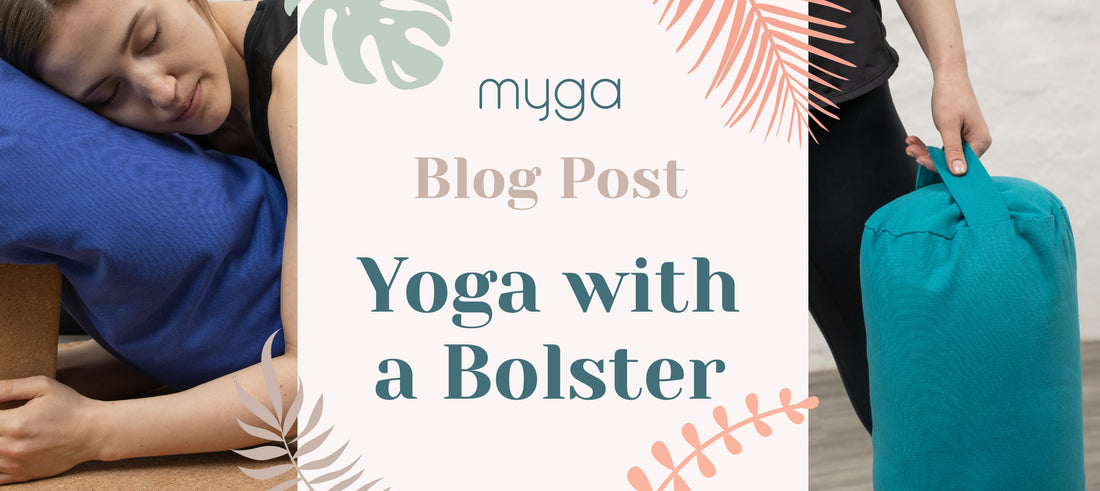Throughout my many years of practising yoga both at home and in studios, I have developed a daily practise that is an amalgamation of different disciplines and teachers. For me, there is no better way of waking myself up (aside from my morning coffee) than intuitively moving my body. But a sudden injury has meant that those poses I rely on day in day out have begun to fail me.
A foot injury (the cause is still a mystery) has left me in agony whenever I place pressure on it or when it bends. Despite yoga being thought of as low intensity and not strenuous on the body, even simply poses like downward dog are uncomfortable and my morning sun salutations are having to be forsaken.
But that is where my bolster comes in.
I had never used a bolster until recently, and I can’t believe it has taken me this long to buy one. Being forced to switch up my usual vinyasa-style yoga with yin has been an exciting change, and has had many benefits other than just taking pressure off my foot.
Yin yoga is fantastic for those mornings that you wake up and are still half asleep. By performing only a handful of postures but holding them for an extended period of time, you stretch those muscles that are normally tight at this time of the day, preparing your body for the day ahead. Practised in the evening, it acts as a beautiful way of winding down where you can melt away stress and tension with each breath.
For those who like more of a challenge, yin can be practised actively where you work on building your flexibility. But for those who are injured or are looking for something more relaxing, it can be passive and restorative.
To get you started with a bolster, try adding some of these poses to your flow, holding each for around 10 breaths:

Supported Pigeon Pose
Pigeon pose can be intense, especially for beginners. To come into the pose, stretch one leg out long behind you while you bend the other leg so your shin is in line with the front of your yoga mat. To support you, pop the bolster under your hips and either stay upright or fold over your front leg.
Supported Fish Pose
This is one of my favourite postures as it provides such a nice release for the back. Place the bolster vertically along the mat, and sit in front of it with your legs outstretched in front of you. Then slowly lean back until you are lying on your bolster. Make sure your feet are relaxed and legs are wide, and your arms are outstretched with palms facing up.
Supported child’s pose
Whenever my yoga teacher says the words “now come into child’s pose”, my heart sings a little. It’s such a wonderful rest mid-flow, and can be adapted for yin to create a beautiful restorative posture. To begin, sit with your knees wide and place the bolster between your legs. Folding forwards over it, rest your upper body on the prop and turn your head to one side so your head is also supported.
Seated forward fold
Forward folds can be a very active pose and quite challenging if you have tight hamstrings. For a gentler version, place the bolster on your legs and relax over it. If you are finding that there is space between you and the bolster, place another bolster or a cushion underneath to experiment with height.
Savasana
Love it or hate it, savasana is probably the most important pose in your class. It allows you to soak in all that you’ve done and provide a moment for reflection before you move into the rest of your day. To use a bolster here, place the prop underneath your knees and lie back with arms and legs outstretched. If you find you usually have a lot of space between your spine and the mat, using a bolster in this way can be great in supporting your lower back.
If you would like to start experimenting with other props, Myga has a whole host of yoga accessories here (https://www.myga.eco/collections/yoga-accessories). Why not try a yoga wheel? A great addition to any yogi’s collection, a wheel can be a fun way of mixing up your daily practise and getting you excited to step on the mat.
Bio:
Serina Tatham is currently working for a magazine that champions sustainable luxury travel. She has been passionate about the environment for years, and looks forward to sharing her tips and tricks on how to live a more conscious lifestyle with the Myga community. In her spare time, she loves practising yoga (especially yin), discovering new rambles in her local area, and experimenting in the kitchen.

